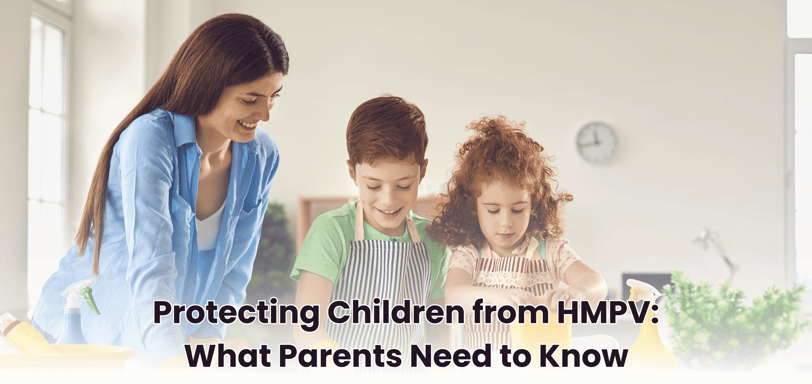Protecting Children from HMPV: What Parents Need to Know
As a parent, safeguarding your child’s health is a top priority. While common illnesses like colds and flu are familiar foes, a lesser-known virus called Human Metapneumovirus (HMPV) can pose a significant threat to children. Understanding this virus and taking steps to prevent its spread can help protect your family.
1/13/20252 min read


What is HMPV?
Human Metapneumovirus (HMPV) is a respiratory virus first identified in 2001. It belongs to the same family as respiratory syncytial virus (RSV) and is a leading cause of upper and lower respiratory infections, especially in children. HMPV infections are most common during late winter and early spring.
Symptoms of HMPV
HMPV can cause a wide range of symptoms, from mild to severe, including:
Mild Symptoms:
Runny nose
Cough
Fever
Sore throat
Severe Symptoms:
Wheezing
Difficulty breathing
Bronchiolitis
Pneumonia
While most children recover within a few weeks, young infants, children with weakened immune systems, or those with underlying health conditions may experience more severe complications.
How HMPV Spreads
HMPV spreads through:
Respiratory droplets: When an infected person coughs or sneezes.
Direct contact: Touching contaminated surfaces and then touching the face, especially the eyes, nose, or mouth.
Close contact: Spending time with an infected person, such as hugging or sharing utensils.
Preventive Measures for Parents
To reduce the risk of HMPV infections, parents can take the following precautions:
Practice Good Hygiene:
Teach children to wash their hands frequently with soap and water for at least 20 seconds.
Use alcohol-based hand sanitizers if soap and water are unavailable.
Disinfect Surfaces:
Regularly clean and disinfect high-touch surfaces like doorknobs, toys, and electronics.
Encourage Respiratory Etiquette:
Teach children to cover their mouth and nose with a tissue or their elbow when coughing or sneezing.
Dispose of tissues immediately and wash hands afterward.
Avoid Close Contact with Sick Individuals:
Keep children away from individuals showing symptoms of respiratory illness.
Limit visits to crowded places during peak HMPV season.
Strengthen Immunity:
Ensure children eat a balanced diet rich in fruits, vegetables, and whole grains.
Encourage regular physical activity and adequate sleep.
Monitor Symptoms:
Be vigilant for signs of respiratory distress, such as rapid breathing or wheezing. Seek medical attention promptly if symptoms worsen.
Treatment Options for HMPV
There is no specific antiviral treatment or vaccine for HMPV. Care focuses on relieving symptoms:
For mild cases: Use over-the-counter medications to reduce fever and alleviate discomfort. Ensure the child stays hydrated.
For severe cases: Hospitalization may be required, where oxygen therapy and other supportive measures can be provided.
When to Seek Medical Attention
Contact a healthcare provider if your child:
Has difficulty breathing
Shows signs of dehydration (e.g., fewer wet diapers, dry mouth)
Experiences high fever that doesn’t respond to medication
Appears unusually lethargic or unresponsive
Final Thoughts
While HMPV may not be as widely recognized as other respiratory viruses, it’s essential for parents to remain informed and proactive. By practicing good hygiene, monitoring symptoms, and seeking timely medical care, you can help protect your child from HMPV and ensure their health and well-being. Stay vigilant and consult your pediatrician with any concerns about your child’s respiratory health.
